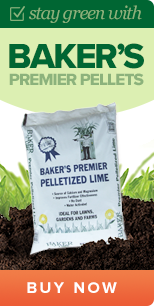How to Restore Old or Dead Soil
Author/Reviewed By: Josh Miller, Sales Manager: Baker Lime & North America Minerals
Published: 2/28/2020
Do you find that your green thumb is failing in your home garden? Are you frustrated with patchy grass? The quality of your soil could be the culprit.
Modern farming methods that greatly reduce the amount of carbon in the ground can cause soil degradation. Pesticides and fertilizers impact the soil pH, making it too acidic. Environmental factors also contribute to bad soil. Pollution and acid rain can change the soil’s composition. Rainfall can turn soil acidic by removing basic elements like calcium and magnesium. When this happens, the soil can no longer support your plants and grass.
To verify that soil acidity is the source of the issue, you should test your soil to determine the number of nutrients that leave the soil. A soil analysis will inform you of the type of fertilizers or limestone to apply. If your area recently experienced excessive rain, soil acidity may be the problem.
Soil Restoration Methods
There are several methods for restoring old or dead soil, including the use of cover crops and limestone.
Cover Crops and Rotation Planting
Replanting an area with cover crops helps stimulate the soil with lost nutrients. A few cover crops that restore degraded soil include rye, clover and oats. Each benefits the soil in different ways to promote overall soil health. In a similar method, rotation planting allows different plants to give a variety of nutrients to your garden or land.
Adding Limestone to the Soil
Soil fertility and crop specialists recommend liming the soil. Adding limestone to the soil neutralizes the acidic elements. Limestone reacts with the acidic soil while adding back the missing calcium and magnesium. Using limestone offers an economical and easy way to restore soil health.
Limestone comes in the form of powder and pellets, and most people prefer using pellets. Powder tends to blow away, does not spread and leaves a cloud of dust in the area. Pellets spread well and only require water to activate.
Benefits of Baker Lime Premier Pellets
Fixing bad soil becomes easy with Baker Lime Premier Pellets. Thanks to their small size, the pellets can be easily spread in your garden, across your lawn or wherever you need them. Sprinkle water to activate the reaction, and the pellets get to work improving your soil’s ability to nourish crops, plants and grass. Once you give the lime enough time to take effect, you will feel proud of your garden, lawn or farmland.
Premier Pellets have many applications. In particular, they improve grass areas that do not grow even under the best care. Sometimes extreme weather conditions can impact your lawn’s ability to grow. Premier Pellets put the necessary calcium and magnesium back into the soil that sustains grass during these times.
Find Your Local Baker Lime Distributor Today
Based in York, Pennsylvania, Baker Lime serves the surrounding areas and several states in the Northeast. Use our distributor locator tool to find and contact a Baker Lime distributor near you, and ask any questions about limestone materials or learn more about Baker Lime Premier Pellets.








